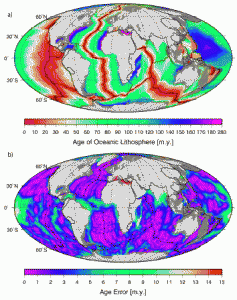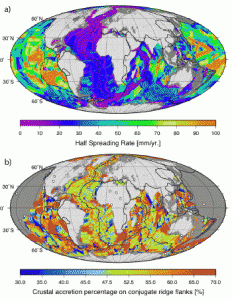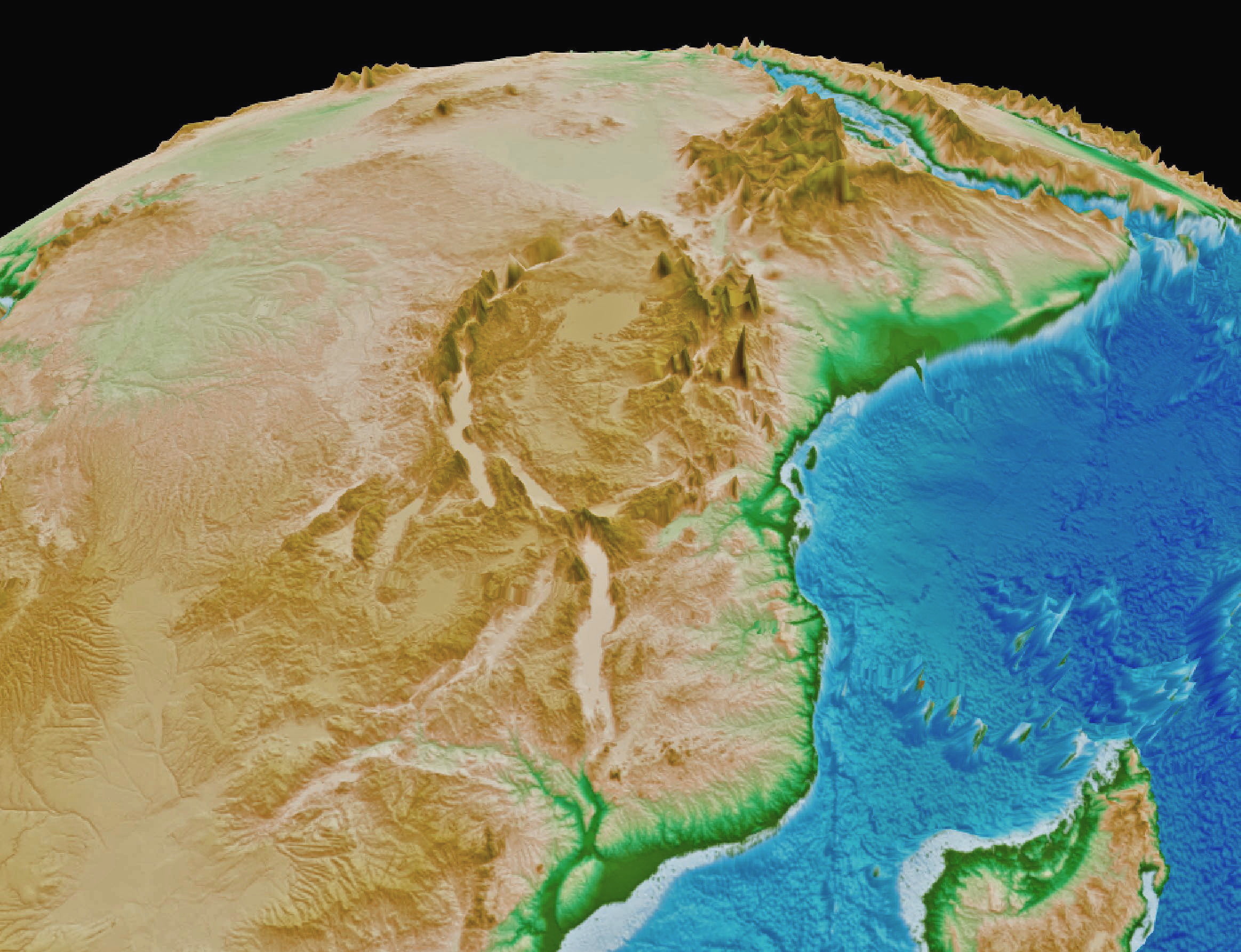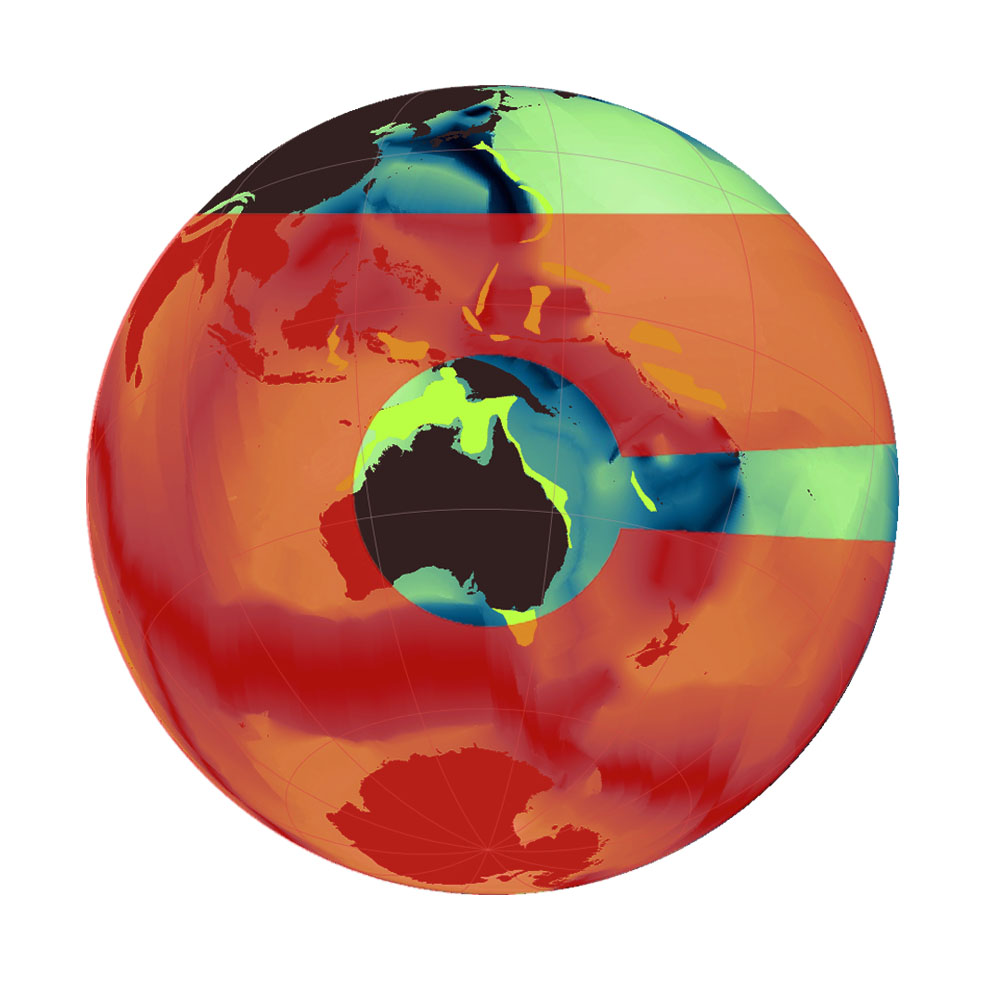
 We present four companion digital models of the age, age uncertainty, spreading rates and spreading asymmetries of the world’s ocean basins as geographic and Mercator grids with 2 minute resolution. The grids include data from all the major ocean basins as well as detailed reconstructions of back-arc basins.
We present four companion digital models of the age, age uncertainty, spreading rates and spreading asymmetries of the world’s ocean basins as geographic and Mercator grids with 2 minute resolution. The grids include data from all the major ocean basins as well as detailed reconstructions of back-arc basins.
The age, spreading rate and asymmetry at each grid node is determined by linear interpolation between adjacent seafloor isochrons in the direction of spreading. Ages for ocean floor between the oldest identified magnetic anomalies and continental crust are interpolated by geological estimates of the ages of passive continental margin segments. … Read more…


